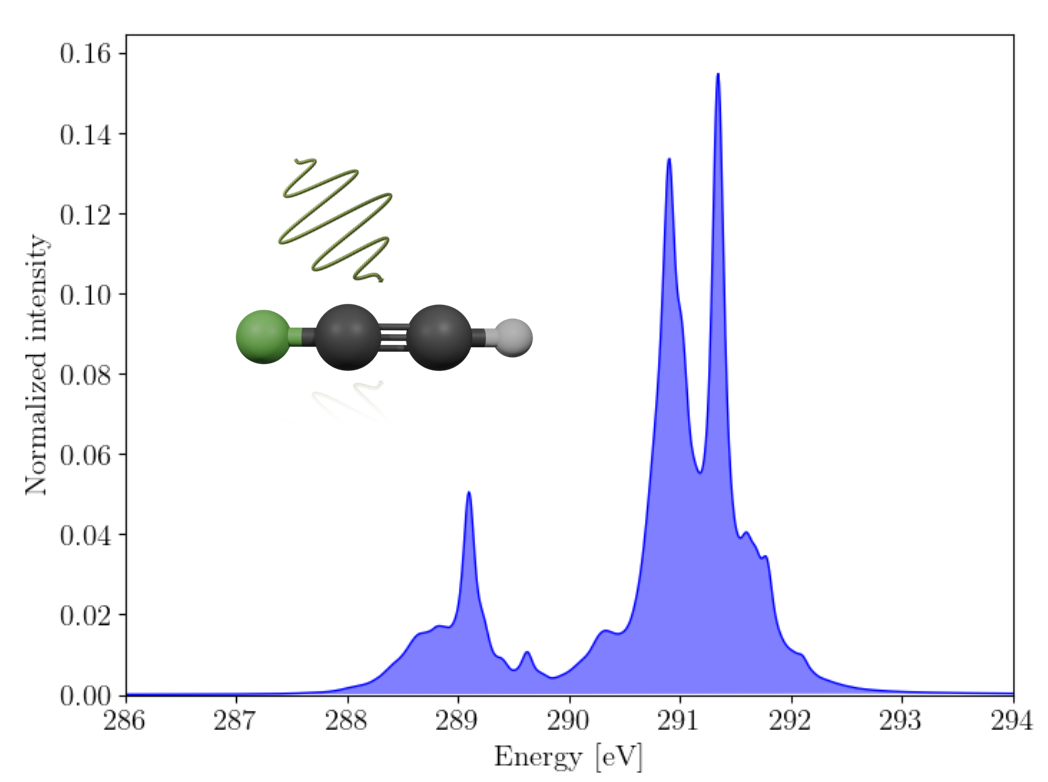You are here: TC Home >> Research
Theoretical Chemistry Group Heidelberg
Research topics
Methods development for high-dimensional quantum dynamicsOur main tool for simulating and studying the quantum dynamics of molecular systems is the MCTDH method and its multilayer-MCTDH generalization. Our research group is very active in further developing MCTDH both, in theory as well as software implementation, together with a comprehensive set of tools for analysis and visualization. We distribute the source code on request to interested researchers. |

|
Strong coupling and molecular polaritonicsStrong coupling between confined field modes in optical cavities and molecular degrees of freedom opens the way to the formation of hybrid light-matter states, named polaritons, that showcase novel properties. We tackle these coupled systems via full quantum dynamical simulations to gain insight into phenomena like transport, energy transfer and rate modifications, shining light onto the fundamental principles governing polaritonic dynamics. |

|
Dynamics of highly flexible molecules and clustersProtonated water clusters are key to understand charge transfer in liquid water and are the building blocks of what is known as the Grotthus mechanism. Interestingly, protonated water clusters of different sizes exhibit very different gas phase IR spectra which is caused by the strong coupling of the proton motion to the solvation shells. The motion of the proton furthermore causes large-scale reorganizations within the cluster leading top rich spectral features. New developments of surface refitting in our group made it possible to study these systems in full-dimensional quantum simulations. This allows investigate the complicated mechanisms that are key to understand the proton motion in water. |

|
Non-adiabatic phenomenaQuantum systems in which the Born-Oppenheimer approximation breaks down and which are hence vibronically strongly coupled are common in the photochemistry of poly-atomic molecules. We extensively work on the development of computational tools to treat the non-adiabatic couplings of such systems in full dimensionality, which allows us to analyze the dynamics through conical intersections and avoided crossings. |

|
Time-resolved spectroscopyOur focus lies on the simulation of time-resolved observables which are experimentally accessible. This includes time-resolved X-ray photoelectron spectra and time-resolved X-ray absorption spectra among others. These spectra encode information about the dynamics of the molecule and allow to track electron and nuclear dynamics in detail. |

|
Ultrafast dynamics of highly excited moleculesAttosecond spectroscopy gives us insights into electron motion on its natural timescale. Using high-level electronic structure ab-initio calculations together with the full quantum treatment of the nuclei we are studying ultrafast processes in core excited molecules. |
|
Intermolecular Coulombic decayIntermolecular Coulombic decay (ICD) is an environment driven relaxation process that can occur in weakly bound systems, including liquid water. In ICD, excess energy of an initially ionized atom or molecule is efficiently transferred to a neighboring atom or molecule ionizing also the latter. The resulting doubly ionized cluster typically breaks apart via Coulomb explosion. Our aim is to elucidate the role of the electron and nuclear dynamics in ICD and ICD-related phenomena (resonant ICD, double ICD, …) in liquid water. We develop accurate models to simulate the full quantum dynamics of the system, including the building of non-Hermitian Hamiltonians, methods for the calculation of the decay rates and diabatization procedures, which are used together with the multi-configurational time-dependent Hartree (MCTDH) approach. See also the Bibliography of ICD and related phenomena |

